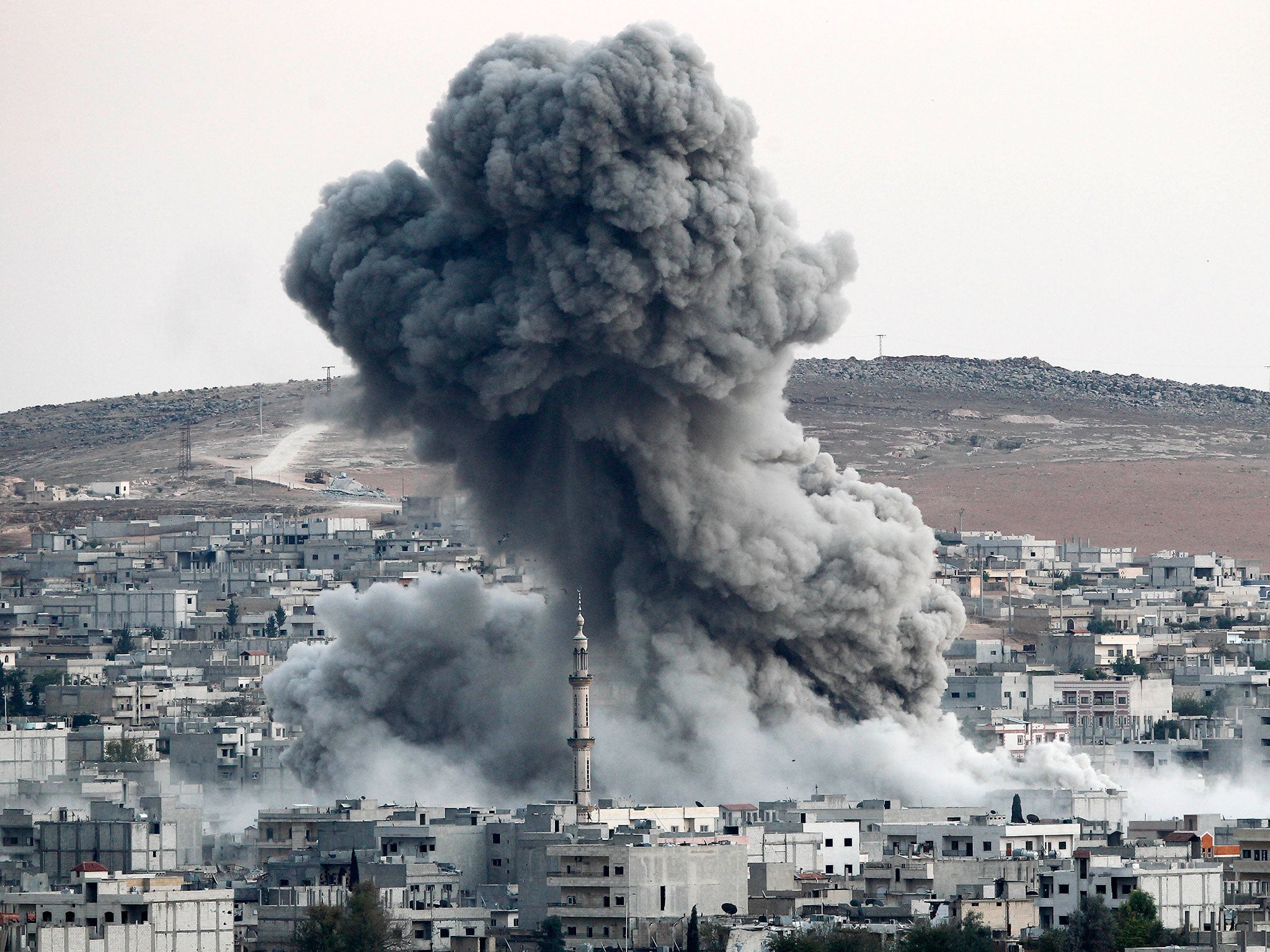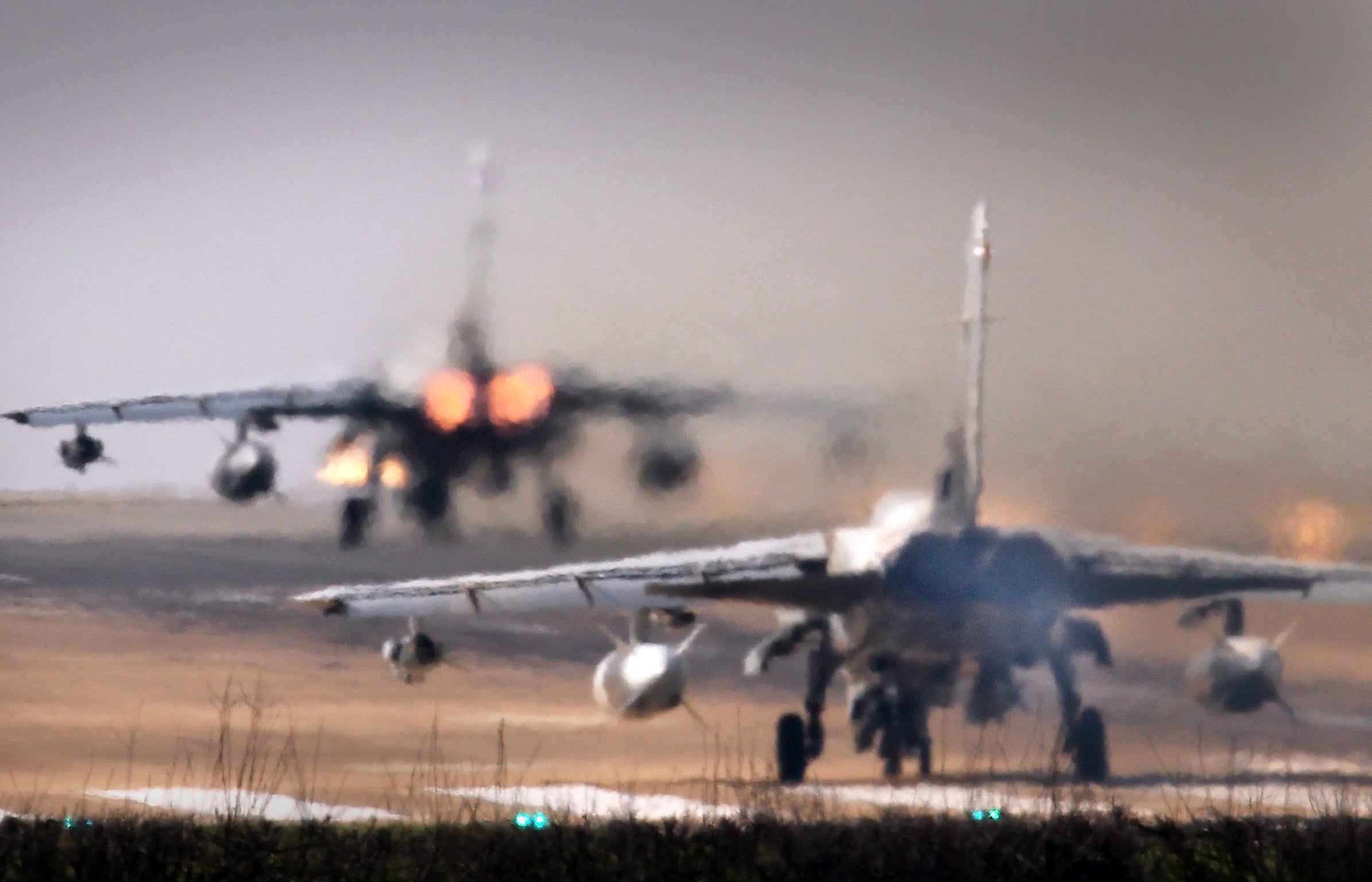US-led coalition confirms 54 more civilian deaths in air strikes against Isis in Iraq and Syria
New investigations bring civilian death toll from 'the most precise air campaign in history to 173

Your support helps us to tell the story
From reproductive rights to climate change to Big Tech, The Independent is on the ground when the story is developing. Whether it's investigating the financials of Elon Musk's pro-Trump PAC or producing our latest documentary, 'The A Word', which shines a light on the American women fighting for reproductive rights, we know how important it is to parse out the facts from the messaging.
At such a critical moment in US history, we need reporters on the ground. Your donation allows us to keep sending journalists to speak to both sides of the story.
The Independent is trusted by Americans across the entire political spectrum. And unlike many other quality news outlets, we choose not to lock Americans out of our reporting and analysis with paywalls. We believe quality journalism should be available to everyone, paid for by those who can afford it.
Your support makes all the difference.The US-led coalition has admitted “inadvertently killing” at least 54 civilians over seven months of its campaign of air strikes against Isis in Syria and Iraq.
They included families, reported to include young children, who died while possibly being used as human shields as jihadis were driven out of their former stronghold of Manbij in July, as well as motorists overtaking targeted vehicles and innocent bystanders struck by bombing.
The military’s latest report brings the number of confirmed civilian deaths in air strikes since August 2014 to 173, although critics and humanitarian groups say the figure is far higher.
President Barack Obama and American commanders have repeatedly described the strikes as the “most precise air campaign in history” but the toll is likely to rise as investigations into other reported civilian casualties continue, with the results released on a monthly basis.
A spokesperson for the Combined Joint Task Force said all reported deaths would be investigated as thoroughly as possible, adding: “Although the Coalition makes extraordinary efforts to strike military targets in a manner that minimises the risk of civilian casualties, in some cases casualties are unavoidable.
“We regret the unintentional loss of civilian lives resulting from Coalition efforts to defeat Isil [Isis] in Iraq and Syria and express our deepest sympathies to the families and others affected by these strikes. “
Officials reviewed 18 reports of civilian deaths in October, with three found to be “credible”, three still under assessment and 12 determined to be “non-credible” either through a lack of evidence or proof that coalition planes were not active at the location or time in question.
The deadliest single incident confirmed by US investigators was a strike on 18 July that killed 24 civilians alongside almost 100 Isis fighters, whose fighting positions, vehicles, car bombs and mortars were also destroyed.
The Combined Joint Task Force’s report said: “Up to 24 civilians who had been interspersed with combatants were inadvertently killed in a known Isil [Isis] staging area where no civilians had been seen in the 24 hours prior to the attack.
“Reports indicated that approximately 100 Isil fighters were preparing for a large counterattack against partnered Syrian Arab Coalition/Syrian Democratic Forces and, unknown to Coalition planners, civilians were moving around within the military staging area, even as other civilians in the nearby village had departed over the previous days.”
The UK-based Syrian Observatory for Human Rights and Local Co-ordination Committees reported at least 15 deaths, including children, in the incident.
Central Command has not yet concluded an investigation into an air strike the following day on the village of al-Tokhar where more than 70 civilians were reported dead in what is believed to be the worst massacre in the coalition campaign.
The Observatory said their homes appeared to have been targeted by “mistake” in the raids, while the Syrian foreign ministry blamed French planes and wrote to the UN demanding an investigation into the incident.
Other confirmed incidents included the death of three civilians in an artillery strike on an Isis mortar system in Sala Heya, Syria, in March.
In May, two civilians were killed during battles to retake the Isis stronghold of Al-Shaddadi in Syria when seven Isis fighters were targeted in a moving vehicle. One civilian was a passenger while the other was on a passing motorbike.
In July, 15 civilians died near Arghanndorh in Syria when another Isis vehicle was hit “after it slowed in a populated area” after the missile was released.
Eight more were killed on 22 October, during the bombing of a building used as a firing position by Isis fighters near Fasitiyah in Iraq.
Two civilians were also killed in separate strikes on militants in Syria – one on 4 October near Taltanah and one on 17 October near Idlib.

The US, Britain, France and other members of the coalition have conducted a total of 16,291 strikes so far as part of the anti-Isis Operation Inherent Resolve, with about two-thirds taking place in Iraq and the rest in Syria.
A report by Amnesty International claimed that at least 300 civilians were killed in just 11 air strikes by the US-led coalition in Syria, with a report released in October finding adequate precautions were not always taken to minimise deaths and damage.
Lynn Maalouf, deputy director for research at the group’s Beirut office, urged US authorities to “come clean” about the full extent of casualties.
“We fear the US-led coalition is significantly underestimating the harm caused to civilians in its operations in Syria,” she added.
“Some of these attacks may constitute disproportionate or otherwise indiscriminate attacks.”
With the vast majority of strikes hitting territory under Isis control, the true number of casualties and the victims’ identities are difficult to verify.
US Central Command admitted it was unable to “fully investigate all reports of possible civilian casualties using traditional investigative methods, such as interviewing witnesses and examining the site”, adding it interviews pilots, reviews strike footage and analyses information from partner forces, governments, humanitarian groups, and both traditional and social media.
A spokesperson said all possible precautions are taken and that the strikes are in compliance with international law.
Join our commenting forum
Join thought-provoking conversations, follow other Independent readers and see their replies
Comments